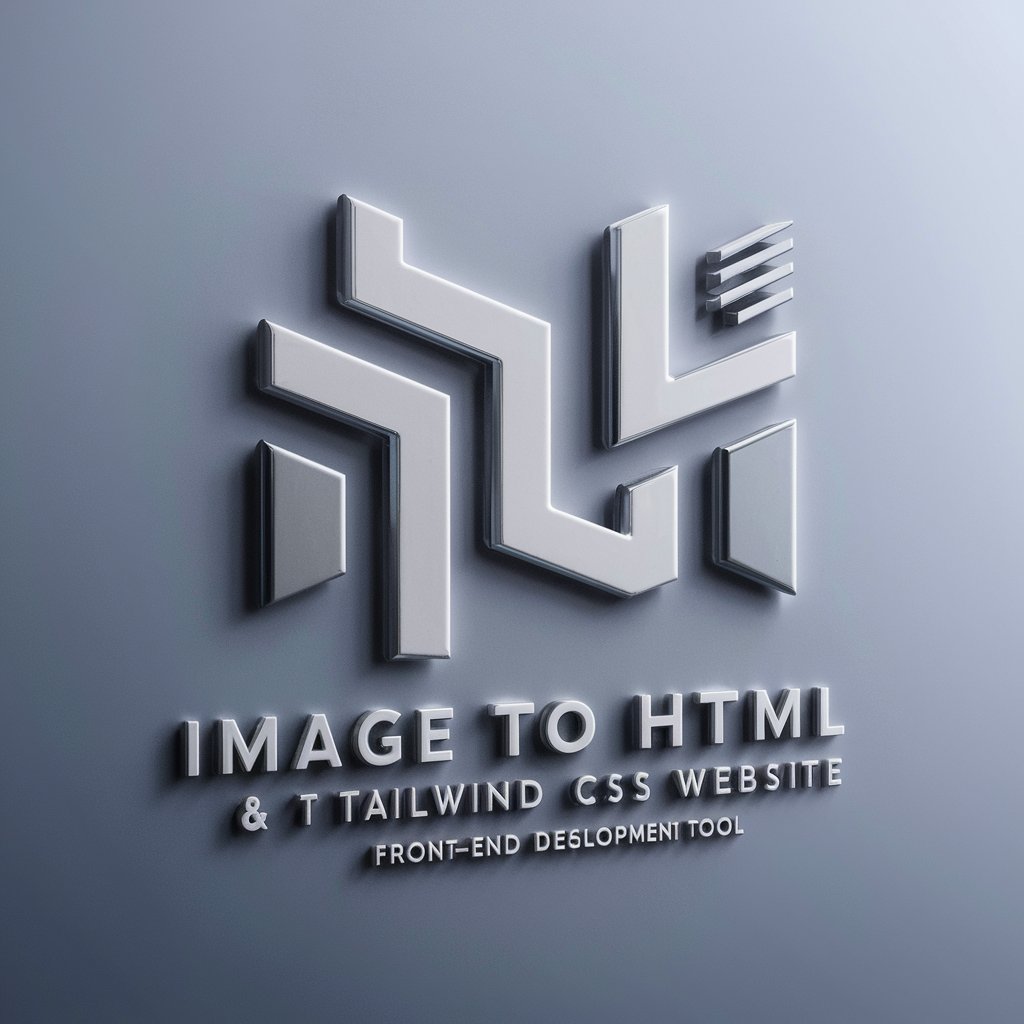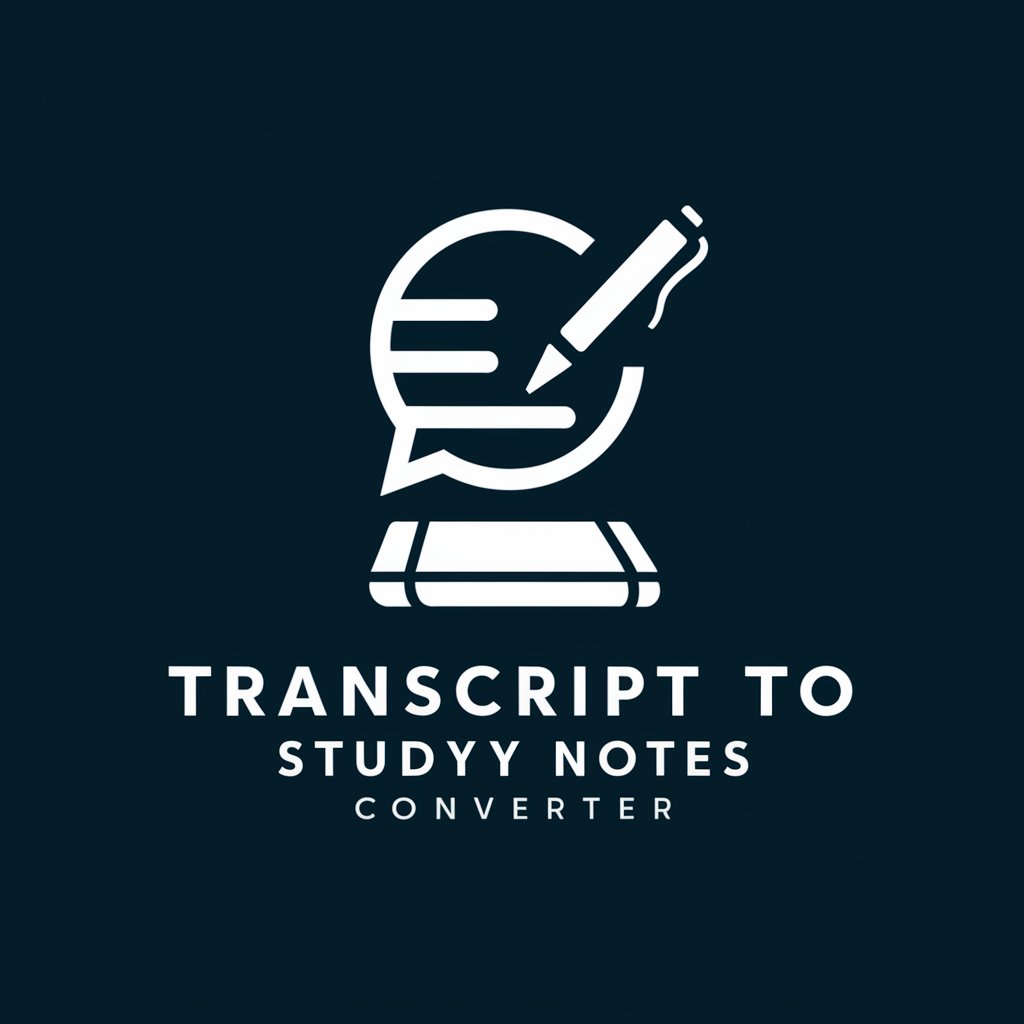Image to HTML & Tailwind CSS website - Image to HTML/CSS Conversion

Welcome! Let's create pixel-perfect web designs together.
Transforming designs into code, effortlessly.
Generate a clean HTML layout for a webpage featuring...
Create Tailwind CSS classes for a responsive design that includes...
Write HTML and Tailwind CSS for a navigation bar with...
Design a footer section using Tailwind CSS that contains...
Get Embed Code
Introduction to Image to HTML & Tailwind CSS Website Conversion
The Image to HTML & Tailwind CSS website service specializes in converting visual website designs into fully functional websites using HTML and the Tailwind CSS framework. This process involves analyzing a provided image of a website layout and meticulously coding it into HTML structure, styling it with Tailwind CSS for responsive and efficient design, and ensuring it matches the original design as closely as possible. The service caters to the need for rapid prototyping, ensuring web designs are quickly turned into live, responsive websites. For example, a web designer creates a stunning layout in a graphic design tool and uses this service to transform their vision into a coded website, accelerating the development process and bridging the gap between design and development. Powered by ChatGPT-4o。

Main Functions of Image to HTML & Tailwind CSS Website Conversion
Visual to Code Conversion
Example
Converting a JPEG or PNG image of a website mockup into a fully coded HTML and Tailwind CSS page.
Scenario
A web designer provides an image of a landing page with complex layout and custom components. The service converts this image into a responsive webpage, using Tailwind's utility classes for layout, spacing, typography, and color schemes.
Responsive Design Implementation
Example
Using Tailwind CSS to ensure the website is responsive and adapts to various screen sizes from the design stage.
Scenario
For a portfolio website design, the service codes the HTML structure and applies Tailwind CSS classes to make sure the website looks great on all devices, from desktops to smartphones, without needing additional adjustments.
Optimization and Accessibility
Example
Enhancing website performance and ensuring it is accessible to all users, including those with disabilities.
Scenario
In converting an e-commerce site design, the service not only replicates the visual layout but also optimizes image loading times and includes semantic HTML and ARIA labels for screen readers, improving SEO and user experience.
Ideal Users of Image to HTML & Tailwind CSS Website Services
Web Designers
Web designers who create visual designs and need to convert them into live websites quickly benefit from these services. It saves them time and allows them to focus on design rather than coding.
Front-end Developers
Front-end developers looking for a quick way to implement designs using modern CSS frameworks like Tailwind CSS. They benefit from streamlined development processes and faster prototyping.
Small Business Owners
Small business owners needing a website based on a specific design can use this service to get a fast, responsive website without diving deep into the technicalities of web development.
Marketing Teams
Marketing teams requiring landing pages that are quickly deployable for campaigns. The service allows them to turn designs into functional pages rapidly, aiding in time-sensitive promotions.

Using Image to HTML & Tailwind CSS Website
Initiate Your Journey
Start by visiting yeschat.ai for a complimentary trial, with no requirement for login or a ChatGPT Plus subscription.
Upload Your Image
Provide a clear and concise screenshot of your website design. Ensure the image captures all elements you wish to convert into HTML and Tailwind CSS.
Specify Your Preferences
If there are specific Tailwind CSS versions or preferences you have in mind, specify them upfront to tailor the output accordingly.
Review and Adjust
Once the initial conversion is complete, review the generated code. You may need to adjust or fine-tune certain elements for a pixel-perfect match.
Implement and Test
Implement the generated code into your project. Test for responsiveness and compatibility across different browsers and devices for optimal performance.
Try other advanced and practical GPTs
Geeky Email Design Advisor
Optimize your emails with AI-driven insights
Transcript to Study Notes Converter
AI-Powered Study Note Transformation

Professor de português
AI-powered linguistic expertise for Portuguese learners

Retiring Owner Business Finder
Connect with retiring owners seamlessly.

Retrogame maker
Craft Your Game, Power Your Imagination

WinePath California Winery Guide
Discover Wineries with AI Precision

CloudFormation expert
Automate AWS with AI-driven CloudFormation expertise.

Text Reverser
Reverse your text, reveal new perspectives!

Festival Tech Innovator
Revolutionizing Music Festivals with AI

Festive Designer
Craft Festive Spirits with AI

JuridiCMAchine, Expert Statut CMA
Navigating CMA Legal Terrain with AI Precision

Australian Law School Super GPT
AI-Powered Legal Analysis for Law Students

FAQs about Image to HTML & Tailwind CSS Website
What is the accuracy of the conversion?
The tool aims for pixel-perfect accuracy. However, complex designs or nuances in images may require manual adjustments for a flawless match.
Can it handle dynamic content or animations?
The tool focuses on static elements conversion. Dynamic content or animations might need manual coding in HTML/CSS or JavaScript.
Is it suitable for responsive web design?
Yes, Tailwind CSS is inherently designed for responsive layouts. The tool generates code that can be easily adapted for various screen sizes.
How does the tool handle images and icons?
For images, placeholders are provided. Icons are matched with equivalent freely available icons from Font Awesome or similar libraries.
What support is available for users?
Users can access documentation and community forums for guidance. For specific issues, contacting support via the platform may be necessary.
